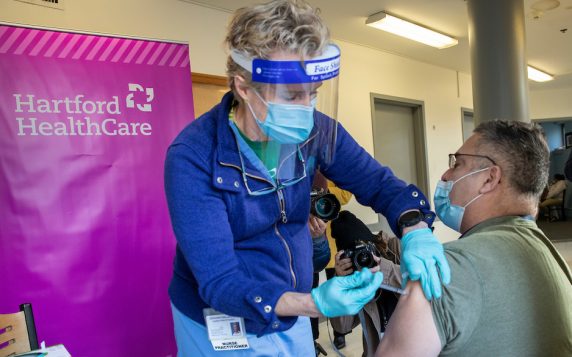A roomful of students with COVID-19 get ready to leave the dorm. Who among the infected are more likely to spread the coronavirus?
It’s likely the students with the highest concentrations of the virus in their body, known as the viral load, according to a new analysis of 72,000 test samples at the University of Colorado Boulder. Researchers there found that 2 percent of people carry 90 percent of the virus and that half of those infected aren’t contagious when diagnosed with COVD-19.
In a related study, only one in five students living in a residence hall who tested positive infected their roommate. The viral load of those who spread the virus was almost seven times higher than those infected who did not spread the virus. One student had 6.1 trillion copies of the virus in each milliliter of saliva, the equivalent of 5 percent of all particles found at the time among students. Another student had only eight copies of the virus.
“The takeaway from these studies is that most people with COVID don’t get other people sick, but a few people get a lot of people sick,” Sara Sawyer, a professor of molecular, cellular and developmental biology and senior author of the first study, told CU Boulder Today. “If you don’t have a viral super-carrier sitting near you at dinner, you might be OK. But if you do, you’re out of luck. It’s a game of roulette so you have to continue to be careful.”
The initial study analyzed results from 1,405 people who tested positive — weekly COVID-19 tests were required of all students who live in the college’s dormitories — but did not show symptoms and compared the results to people hospitalized with the virus. About half of both the symptom-free and hospitalized groups had sufficiently low viral loads that they might not have been contagious.
In Connecticut, one guest per student is now allowed at UConn residence halls. Overnight visits are still prohibited. Sacred Heart University in Fairfield, meanwhile, provided a 3,500-square-foot tent where students could meet safely while following safe-distancing guidelines.
After a year of COVID-19, the core safety guidelines remain.
“It’s as important as ever to wash your hands, wear a mask and don’t touch your face,” said Keith Grant, APRN, head of infectious disease for Hartford HealthCare. “Those are still the basic ways to avoid COVID-19 infection.”



